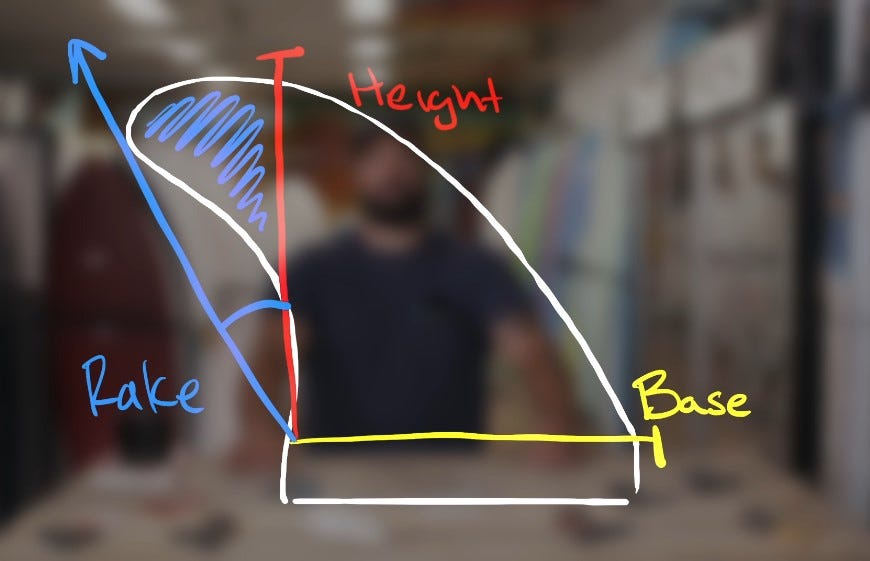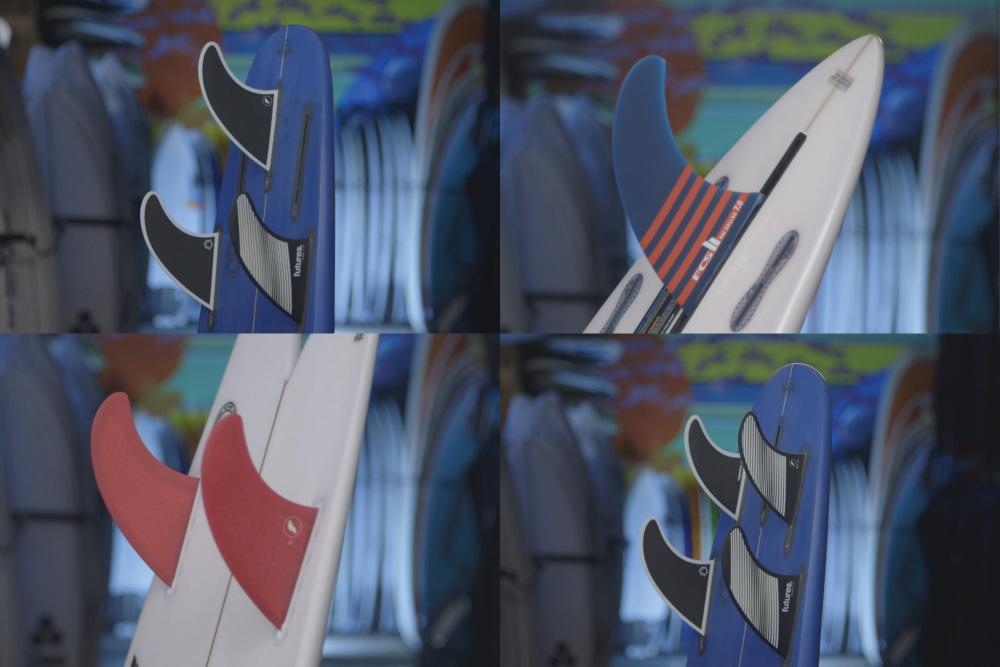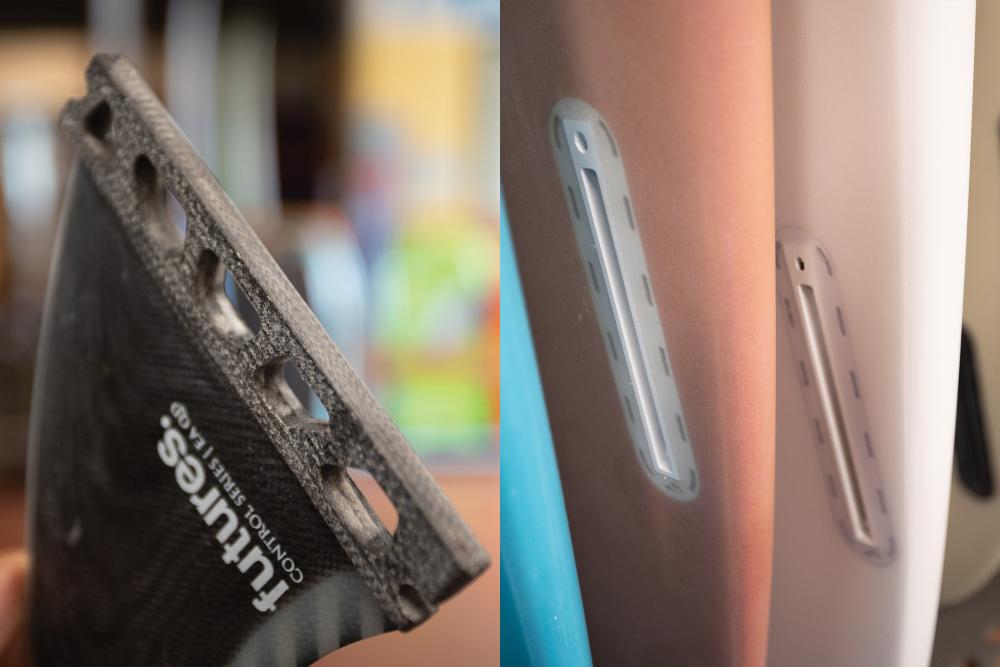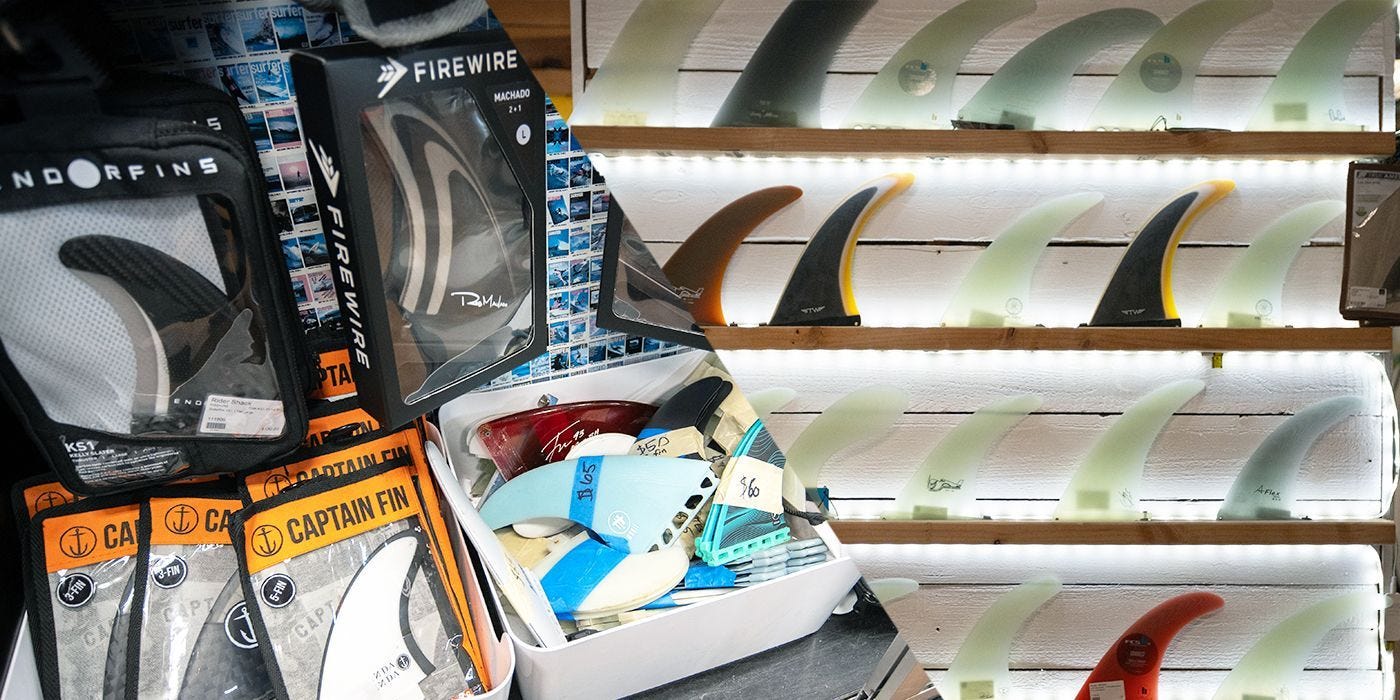Why Surfboard Fins Are Crucial for Your Surfing Performance
Surfboard fins are a key component of any surfboard, playing a vital role in providing stability, control, and speed on the wave. The right set of fins can make a significant difference in how your board performs, helping you hold your line, make sharp turns, and generate speed. Choosing the perfect surfboard fins can be a complex task and often requires experimentation, but understanding the basics will set you on the right path.
Basics of Surfboard Fin Design
The design of a surfboard fin affects how your board performs. Here are some key aspects to understand:

Rake (or Sweep)
Rake (or sweep) refers to how much a fin curves backward. The more rake a fin has, the more drawn-out your turns will be. A fin with less rake—one that is more upright—allows for sharper, more pivot-oriented turns. If you're looking for maneuverability, a more vertical fin will help you turn quickly, whereas more rake provides a smoother, flowing ride.
Fin Height (or Depth)
Fin height (or depth) determines how much hold the fin has on the wave. Taller fins provide more hold, making them ideal for powerful surfers who need added stability to prevent their boards from sliding out during turns. Shorter fins, on the other hand, offer less hold but allow for more loose and playful surfing.
Fin Base
The base of a fin is the width at the point where it attaches to the board. A wider fin base generates more speed down the line, giving you better drive and allowing you to carry momentum. A larger base is beneficial for faster surfing in powerful waves.
Types of Surfboard Fins Explained

Single Fins
Single fins are commonly used on longboards, retro shortboards, and eggs. The single fin setup provides a classic, smooth feel, allowing for long, flowing turns. Sometimes, small side fins are added for more stability, but the traditional single-fin setup remains popular for its effortless glide.
Twin Fins
Twin fins are popular for fish surfboards, offering a fast and loose surfing experience. The twin-fin setup allows for quick speed generation and loose, skatey turns, making it a great choice for smaller, playful waves.
Thruster Fins (Tri-Fin Setup)
The thruster fin setup—with three fins—is the most common fin configuration for high-performance shortboards. Thruster fins offer a balance of speed, stability, and maneuverability, allowing surfers to make sharp, precise turns. This setup is great for advanced surfers aiming for powerful, controlled carves.
Quad Fins
Quad fins are used on all types of surfboards and are known for providing an extremely fast, down-the-line surfing experience. Quad setups are ideal for generating speed, especially in smaller or mushy waves. Although quad fins do not turn as sharply as thrusters, they excel at speed and drive in softer wave conditions.
FCS Fins vs. Futures Fins: Which Fin System Is Best for You?
There are many brands of surfboard fins, but the two main fin systems are FCS fins and Futures fins. Both systems are widely used and offer benefits for surfers looking to customize their boards.
FCS Fins: Older 2-Tab vs. New FCS II Snap-In Fins
FCS (Fin Control System) fins are designed to be easily removable, allowing you to change your fin setup based on surf conditions or travel requirements.

- FCS 2-Tab Fins: The original FCS 2-tab system uses two tabs that are screwed into fin plugs on the board. This classic system is known for its reliability and has been around for years. Many surfers appreciate the simple design, though the screws make fin changes a little more time-consuming.
- FCS II Snap-In Fins: The newer FCS II system is a snap-in fin system that doesn’t require screws, allowing for quicker installation and removal. This tool-less setup makes it easy to switch fins in seconds, making it a popular choice for surfers who like to adapt their fins on the go. It is important to note that FCS II fins are not compatible with the older FCS 2-tab fin boxes. However, older FCS 2-tab fins can be used in the new FCS II fin boxes with the help of screws or an FCS adapter kit.
Futures Fins

Futures fins use a single tab that runs along the entire length of the fin. These fins are secured into the board using a screw at the front of the fin box. The single-tab design provides increased rigidity, giving the fin and board a more connected feel. Futures fins are known for being very secure and durable, and many surfers appreciate the additional control and power they provide.
Choosing Between FCS and Futures Fins
The choice between FCS and Futures fins comes down largely to personal preference. If you value quick fin changes and easy customization, the FCS II snap-in system is ideal. For those who prefer a more solid connection and don't mind using a screw to secure their fins, Futures fins are an excellent choice. Both systems are high-quality and allow you to switch out fins based on your needs, whether for travel or changing wave conditions.
Conclusion: Experiment to Find Your Perfect Fin Setup
Choosing surfboard fins is a personal journey that can significantly impact your surfing experience. Whether you're riding a thruster, twin fin, or quad setup, experimenting with different fin types can help you understand what works best for you and the waves you’re surfing. From the classic FCS 2-tab to the newer FCS II snap-in and the reliable Futures fins, there are options for every surfer and every condition. Remember, the right fins can elevate your surfing, improve your performance, and make your time in the water more enjoyable.
For all your fin needs, check out our selection of surfboard fins to find the perfect match for your board!




